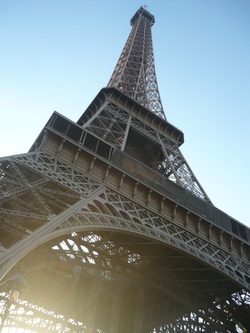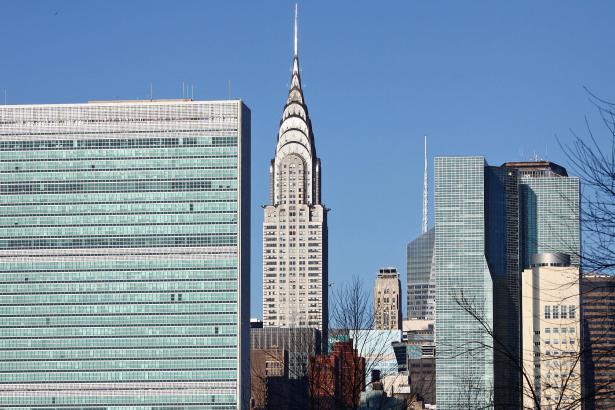 Yes, this image in the public domain.
Yes, this image in the public domain. With that narrative in place, let’s dive in here and break it down.
First, buildings can be copyrighted. More specifically, architectural works are protected. They are protected even though they are “useful”, being made primarily for the housing of people and things. Architectural works and architectural plans are both protected as copyrightable works. When you think about it, this makes sense because architecture, as a form of practical artwork, can be just as much of an original creation as can a painting or sculpture. If an architect spent years designing a critically-acclaimed building only to have elements of it copied by another drafter and re-created on the cheap, it seems wrong that the copier should get off scott-free, especially since architectural plans and drawings are so easy to copy.
Second, pictures of architectural works do not infringe on the copyright in the architectural work. When Congress drafted the statute granting copyright protection to architectural works, it recognized the value of protecting the public’s right to enjoy the architectural works and increase the overall cultural impact of the buildings. After all, as the House report found,
Architecture is a public art form and is enjoyed as such. Millions of people visit our cities every year and take back home photographs, posters, and other pictorial representations of prominent works of architecture as a memory of their trip. Additionally, numerous scholarly books on architecture are based on the ability to use photographs of architectural works.
With Societe d’Exploitation de la Tour Eiffel’s reclaiming of the Eiffel Tower from the public domain (how in the heck could they do that?), people can now be fined for taking pictures of the Eiffel Tower, but only at night. Apparently the light displays that dot the tower are a work of authorship, too. In America we would say the light display is an audio/visual work of sorts, but I don’t think adding a slew of lights to a building automatically creates a copyright in the display, one that prevents anyone from taking pictures of it. Besides, isn’t some of the romance of the Eiffel Tower at night the light display itself? How many potential cultural “bonus points” can a picture of the Eiffel Tower at night contribute to society? My guess is quite a bit if the right photographer captures the right shot at just the right time.
Maybe someone at Societe d’Exploitation de la Tour Eiffel came to this same realization when they clarified the whole situation:
The « Société d’Exploitation de la Tour Eiffel » (The Eiffel Tower operating company) deplores the unfunded rumor shared in the media concerning the monument’s lighting copyright policy.
If it’s true that the illumination of the Eiffel Tower is protected by copyright, only professional or commercial use of these images is subject to prior request from the Société d’Exploitation de la tour Eiffel and may induce a fee.
However, personal use of these images, shared by individuals on social media such as facebook, is entirely rights-free and doesn’t need any prior request from the Sociéte exploitation de la tour Eiffel.
On the contrary, the SETE is glad to see the happiness of its visitors sharing their day and night souvenir of the monument. ERic SPITZ CEO of the eiffel Tower
But can buildings really become trademarks? I’ll take that one up next time.



 RSS Feed
RSS Feed